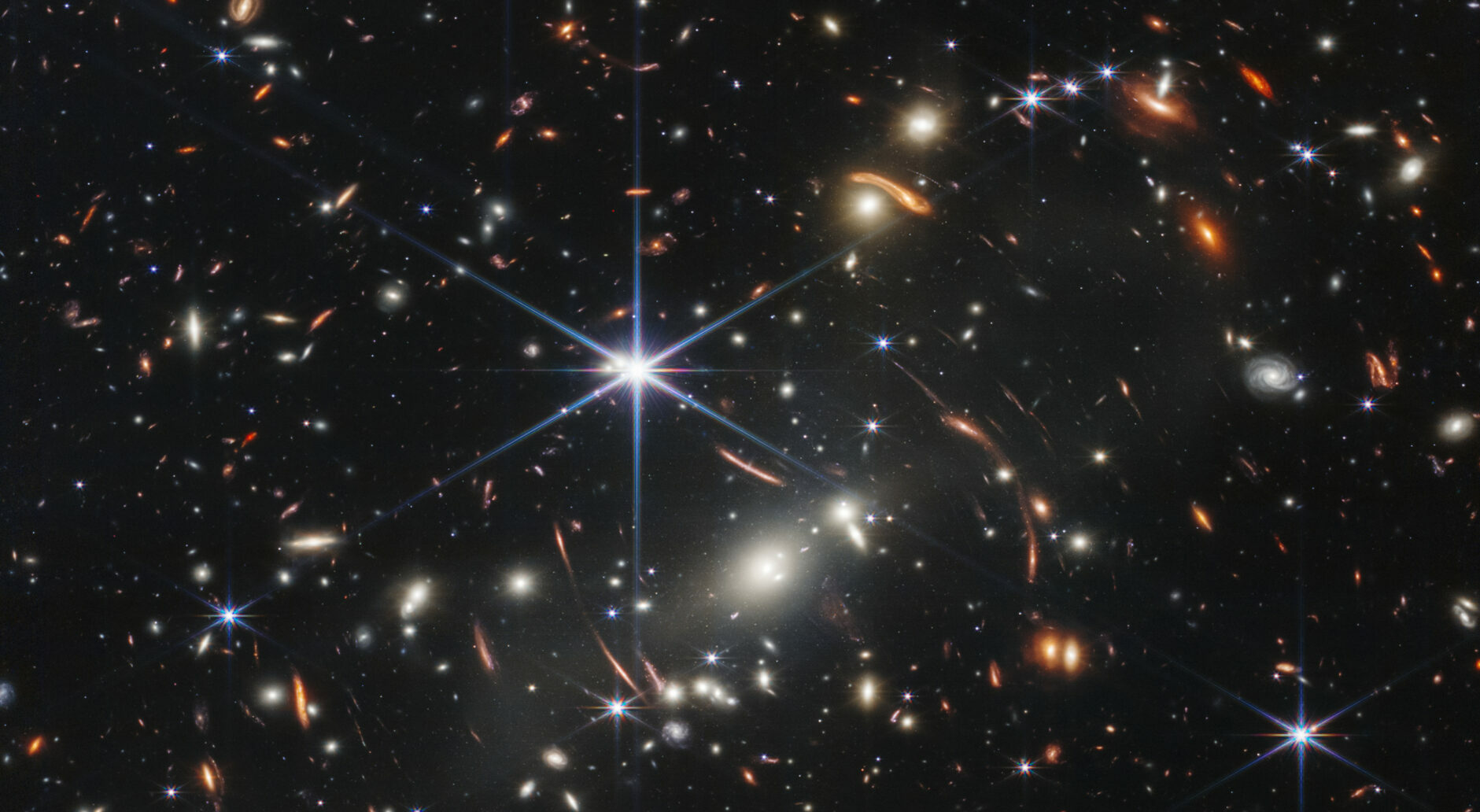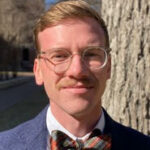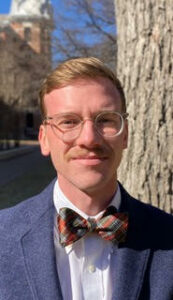Waco, TX. Being a contrarian is often a bad and unhappy habit. With that admission out of the way, allow me to partake in it.
Surely you have seen the beautiful, detailed photographs of galaxies, nebulae, and sundry beauties of outer space recently released by NASA. They were taken by the new-and-improved James Webb Telescope, which is an upgrade from the famous Hubble Telescope.
These photos are, to repeat, beautiful. They are also pictures. For that matter, they are indeed improvements upon the pictures already long supplied by the Hubble Telescope. And in a rarity of our polarized society, everyone is rejoicing at these pictures. For my part, however, I am unimpressed. I would rather see starlit skies free of light pollution rather than the most detailed and gorgeous pictures of lightyear-distant phenomena.
These two options are in fact a dichotomy, if we recognize the consequences of the choices we are making.
An enormous history of technological advance, far beyond anything I could summarize, is packed into the machinations of the James Webb Telescope. Without that history, it would not exist, and we could not see the beautiful photos it gives us. But there is also the simple fact that this history belongs as much to every other piece of technology, not least those machinations which, by means of extracted energies consistently polluting the earth, overwhelm the night sky with such constant beams of electrical light that no person today, in an everyday setting, can see the full starlit sky any longer.
This light pollution cannot be blamed simply on the usual suspects of industrialized megacities and fossil fuel refineries. To illustrate: I am fortunate to live near some rural areas that do have fuller night skies than the average city. However, when I sometimes drive before sunrise to go hunting, I notice that within the past few years, hundreds of newly erected wind turbines—heralds of technology’s imminent salvation of clean energy—now impede the horizon with their presence and, further, add terrible light pollution with their constantly blinking red lights. The flashing rhythm is enough to drive any sane person mad. Whether rural or urban, using clean or dirty energy, we all are implicated.
With this collective insanity, our reliable scientists estimate that “more than 80 percent of the world’s population, and 99 percent of Americans and Europeans, live under sky glow”—constant light pollution. This is incredible, or at least would be to anyone who was not already acclimated to our present reality.
The very technology that provides us these photographs has already blotted out our own visions of the universe. Now, we may only see the wonders of the cosmos as mediated by the graces of these products.
An entire, frightening theory of technology can be, and already has been, expounded upon that fact. I will only draw out one small piece of it.
Our eyes are imperfect, even quite weak compared to other animal eyes, let alone telescopes. But they are ours. And their finitude is a virtue, since with them we not only see but undergo direct communion with what we see, and thereby experience the most intimate events of our lives. With our eyes we see our beloveds. Would we ever rather not to lay eyes on those we love, preferring instead to see their refined pictures, could we still lay honest claim to our loving them? (I fear the answer to that question is no longer so self-evident, but I rely on it being so for now.) Then why would we prefer pictures of unreachable galaxies over our own direct sight of the course of our own Milky Way, the galaxy to which we belong? Yet that is the choice our age has made.
True, to put it so plainly in these terms is jarring because our age has made that choice, for the most part, unconsciously. Yet that is just why technology is so uncanny: it moves with such force as to render us unconscious. That, and not any soon-coming “artificial intelligence,” is the great threat looming upon us.
Now that the night skies have been shrouded to almost all of us, it is time we regain consciousness. We have traded finite but direct experiences of the universe for impressive but indirect pictures thereof. In our day, we cannot ourselves see the heavens; we can only see pixelated images of heaven produced by computer screens. In this respect, we already live in virtual reality.
We cannot flip a switch and fix this, as is the desire of anyone so accustomed to technology. But we can become aware of what we have done. And at the very least, we may begin to yearn for the contrary.






5 comments
Tara
Just magnificent and so lovingly said. Thank you.
Martin
A good criticism but an even better reminder of the need to roll back virtual life. However, I’m astonished that there is nothing in this short essay to praise astronomy as revealing the incredible majesty of the Creator.
OTOH, I agree with Michael that “evangelists” (an actual job title in hitech) promote fake heavenly colors as if real, which is a contradiction of the intent of science. Some years ago the fake Eye of God nebula made the rounds of internet forwards with its ephemeral Wow! about beautiful colors that don’t actually exist.
Pray tell, Casey, who are these “reliable scientists” who made the pronouncement (as opposed to an announcement) of global light pollution? The link you provide to National Geographic is a popular science article that merely echoes the declaration of 80% and 99% omitting not only evidence but even a clear definition of terms. Isn’t that the sort of “virtuality” trap you’re warning against?
Graham Pardun
Amen, brother!
Having only once truly seen the Milky Way–from a dark Kansan prairie, long ago, as a kid–I can say I would happily smash every telescope in existence, if all of us could see that river of stars drifting over our heads every cloudless night–we’d still believe in God!
Your beautiful piece pairs well with the other words I’m having for breakfast this morning, Jonathan Pageau’s “Most of the Time the Earth is Flat,” where he says:
“Men always had artificial spaces, painting, sculpture, maps, but the telescope and microscope are self-effacing artifices, they attempt to replace the eye, to convince us that they are not artificial but are more real than the eye. It is not only the physical gesture of looking at the world through a machine that demonstrates the radical change, though this is symbolic enough, but it is the very fact that people would do that and come to the conclusion that what they saw through these machines was truer than how they experienced the world without them.”
Martin
If you live in Kansas, you must be even more familiar with the “mile roads” than a mere visitor like me. A standard road map will show “parallel” roads that run from the south of the state to the north, each with a “jog” (aka zig or zag) in it.
Why the tweak? Because they have to accommodate the curvature of the earth in order to maintain a north-south orientation. Does that sound “flat” to you?
Michael Sauter
Thanks for this, Casey. This stuff drives me nuts. It seemed like, for the past two days, my Twitter feed was a strange mash-up of inspiring images of heroic Dutch farmers rising up and Sri Lankans demanding power for the people peppered with images of Elon Musk’s next “starship launch” along with “suggestions” I follow the James Webb telescope. One set of images has a quickening effect on imagination and the circulation, and the others act as NyQuil PM. These Webb images and the theatrics surrounding their release are a modern form of bread and circuses offered by the wizards of big bangs and the higher astrology of the vast expanses of outer space. Give me girls and their horoscopes since at least they are looking for something real and good like love. Verbs having to do with what the telescope “sees” and “reaches” only add to the confusion. $10 Billion? I prefer faces and voices. They are free. Furthermore…
“The colors in the image are synthetic. Telescopes record images in black and white, through colored filters. Combining several shots of the same field obtained at different wavelengths, it is possible to show what they would have looked like to the human eye, although the color palette will always be, to some degree, artificial, since much of the light in the infrared is invisible. In the case of the first image from the James Webb, six filters have been used: two in different shades of blue, two in green and two in red.”
https://english.elpais.com/science-tech/2022-07-12/james-webb-space-telescope-a-guide-to-the-first-full-color-image.html
“Filters,” “what they would have looked like,” “artificial”? These images are a combination of plastic surgery, Playboy and blow-up dolls. Coventry Patmore, poet of the ‘imaginative eye’, saw it all:
THE TWO DESERTS
Not greatly mov’d with awe am I
To learn that we may spy
Five thousand firmaments beyond our own
The best that ’s known
Of the heavenly bodies does them credit small.
View’d close, the Moon’s fair ball
Is of ill objects worst,
A corpse in Night’s highway, naked, firescarr’d, accurst;
And now they tell
That the Sun is plainly seen to boil and burst
Too horribly for hell.
So, judging from these two,
As we must do,
The Universe, outside our living Earth,
Was all conceiv’d in the Creator’s mirth,
Forecasting at the time Man’s spirit deep,
To make dirt cheap.
Put by the Telescope!
Better without it man may see,
Stretch’d awful in the hush’d midnight,
The ghost of his eternity.
Give me the nobler glass that swells to the eye
The things which near us lie,
Till Science rapturously hails,
In the minutest water-drop,
A torment of innumerable tails.
These at the least do live.
But rather give
A mind not much to pry
Beyond our royal-fair estate
Betwixt these deserts blank of small and great.
Wonder and beauty our own courtiers are,
Pressing to catch our gaze,
And out of obvious ways
Ne’er wandering far.
Comments are closed.